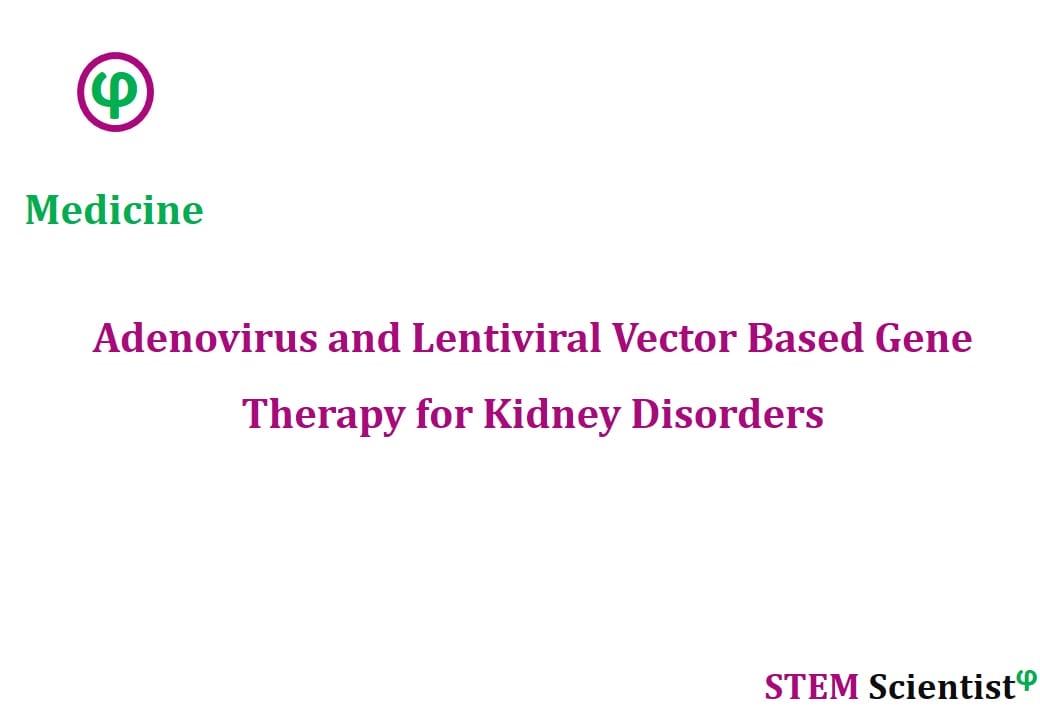
The following study was conducted by Scientists from Department of Internal Medicine; Division of Infectious Diseases; Department of Surgery; Department of Immunology; Department of Molecular Medicine, Mayo Clinic, Rochester, USA.
Scientists carried out investigations to uncover the feasibility of different vectors for gene therapy strategies. The potential ability and efficiency of adeno-associated virus (AAV), adenovirus (Ad), and lentiviral (LV) vectors were compared to deliver genes to renal cells. These findings would certainly enable designing of different vector based gene therapy platforms in myriad of kidney diseases.
Human Gene Therapy – December 2019.
Comparison of Gene Delivery to the Kidney by Adenovirus, Adeno-Associated Virus, and Lentiviral Vectors After Intravenous and Direct Kidney Injections
Abstract
There are many kidney diseases that might be addressed by gene therapy. However, gene delivery to kidney cells is inefficient. This is due, in part, to the fact that the kidney excludes molecules above 50 kDa and that most gene delivery vectors are megaDaltons in mass. We compared the ability of adeno-associated virus (AAV), adenovirus (Ad), and lentiviral (LV) vectors to deliver genes to renal cells. When vectors were delivered by the intravenous (IV) route in mice, weak luciferase activity was observed in the kidney with substantially more in the liver. When gene delivery was observed in the kidney, expression was primarily in the glomerulus. To avoid these limitations, vectors were injected directly into the kidney by retrograde ureteral (RU) and subcapsular (SC) injections in mice. Small AAV vectors transduced the kidney, but also leaked from the organ and mediated higher levels of transduction in off-target tissues. Comparison of AAV2, 6.2, 8, and rh10 vectors by direct kidney injection demonstrated highest delivery by AAV6.2 and 8. Larger Ad and LV vectors transduced kidney cells and mediated less off-target tissue transduction. These data demonstrate the utility of direct kidney injections to circumvent the kidney size exclusion barrier. They also identify the effects of vector size on on-target and off-target transduction. This lays the foundation for the use of different vector platforms for gene therapy of diverse kidney diseases.
Source:
Human Gene Therapy.
URL: https://www.liebertpub.com/doi/10.1089/hum.2019.127
Citation:
Rubin, J. D., T. V. Nguyen, et al. (2019). “Comparison of Gene Delivery to the Kidney by Adenovirus, Adeno-Associated Virus, and Lentiviral Vectors After Intravenous and Direct Kidney Injections.” Human Gene Therapy 30(12): 1559-1571.


